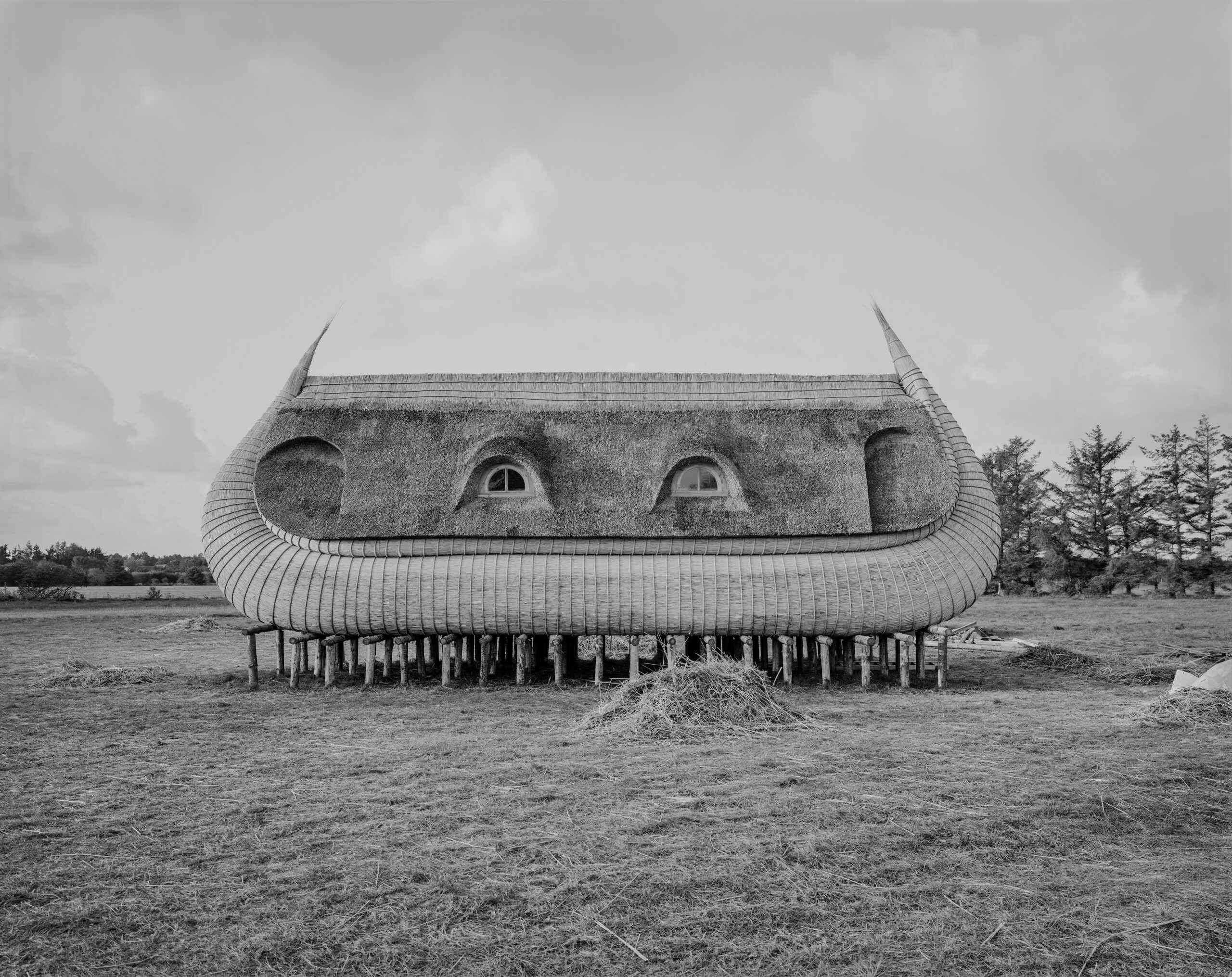Casey Kaplan

Simon Starling: Houseboat for Ho
Houseboat for Ho has been developed specially for the low-lying village of Ho, in an area that is directly threatened by climate change-induced sea level rise. Part locally inspired vernacular rural dwelling, part exotic boat, Houseboat for Ho is a hybrid structure built using two related but geographically remote ancient technologies – reed boat building and thatching. Torn between the land and the sea, this prophetic, Ark-like vessel, is the result of a cross-cultural collaboration – an exchange of techniques and histories between Danish thatched roof builders and Bolivian reed boat builders.
While individually fragile, when bundled together, certain grasses (most notably water reed) can be used structurally when other building materials are unavailable. These reed bundles are the key building blocks of both reed boats and thatched roofs.
The first thatched houses were built in what is known as “the Germanic settlement area” which in the Neolithic period was situated in what is today Schleswig-Holstein and southern Denmark. This period saw a shift from nomadic cultures (hunter-gatherers) who needed lightweight, mobile dwellings, to sedentary communities of farmers and fishermen who required long lasting, stable homes. Hides, leaves and branches were replaced by more robust materials including reed thatch. As villages became towns and towns became cities, thatch slowly disappeared from urban contexts due to the perceived fire risk but remains a popular rural building technique to this day and is increasingly understood to be a sustainable and energy efficient solution. Many fine examples of traditional thatch can be found in the vicinity of Ho, alongside innovative contemporary uses of thatch such as Dorte Mandrup’s award winning Vadehavscentret in nearby Ribe.
Reed boat building has a long tradition – the earliest discovered remains of a reed boat are 7000 years old. The tradition is kept alive today by the Aymara and Uru boatbuilders on Lake Titicaca in the High Andes and among coastal fishermen along the Pacific shores of Peru. In Africa reed boats are still in use on Lake Chad and in Mesopotamia (now southern Iraq), at the confluence of the Tigris and Euphrates rivers, the Marsh Arabs still build boats, buildings (mudhif) and small floating islands from water reeds.
Reed boat building and thatching require the same raw material – reed bundles. In the integrated design for Houseboat for Ho, in which the house becomes the boat and the boat the house – there is a seamless transition from boat to roof. The orientation of the reeds shifts as they move through the structure, from the buoyant horizontal reed bundles in the boat below, through the upward curving prow and stern and into the weather-resistant perpendicular reed bundles in the thatched roof. This shift from the horizontal to the vertical and back again, becomes emblematic of the cross-cultural collaboration, the combining of two ancient building techniques from two normally remote cultures, in the northern and southern hemispheres, in a single hybrid structure.
Houseboat for Ho is a commission by Statens Kunstfond and Varde Commune and will be on view for one year in the Wadden Sea National Park (Vadehavet) in Ho, Denmark.